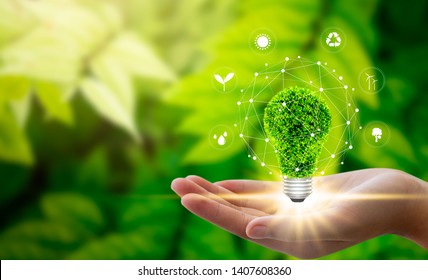How Many of Them Do You Do? Seventeen Simple Things You Can Do About Climate Change
by Kat Kerlin
1) Bring your own bottle or mug.
It’s a teensy thing, but bringing your own reusable cup or coffee mug is easy and feels good. Sometimes you even get drink discounts for using these things.
2) Replace inefficient bulbs.
Inspired by research conducted by the California Lighting Technology Center at UC Davis, the University of California’s Million LED Challenge enables UC students, staff and faculty to order high-quality LED bulbs at reduced cost. For everyone else, there are several options on the market. Learn how to choose the right light.
3) Turn off some lights.
Turn off lights in empty rooms (of course) but also ask yourself, “Do I really even need this light on?” I recently had a meeting in a climate science professor’s office that was only lit by daylighting from the window and it was, well, enlightening.
4) Have a “2 degrees” goal at home.
Set your thermostat a couple of degrees up (A/C) or down (heater) depending on the season to make a difference in your energy use and energy bill. For each degree raised, you can save 3-5 percent on air conditioning costs, for example, according to the American Council for an Energy-Efficiency Economy.
5) Walk or bike somewhere you’d normally drive today.
Even parking your car and riding a bike the rest of the way to your destination can save fossil fuel emissions and introduce some exercise to your day. A 2015 study by the Institute of Transportation Studies at UC Davis found that a dramatic global increase in bicycling could reduce urban transportation emissions up to 10 percent by 2050.
6) Vote!
This is super simple and super important. And write or call your government representatives about environmental and other issues important to you. The power of collective action can be a force to behold.
7) Plant something.
Physically connecting with the literal earth and caring for what’s grown helps you understand and appreciate it. All the better if what you plant is native and attracts pollinators like bees, butterflies and hummingbirds.
8) Take a hike.
Finding your happy place in the natural environment helps you become personally invested in what’s at stake.
9) Cut food waste.
Eat leftovers, embrace “ugly” or imperfect produce, and learn other ways to reduce food waste.
10) Slower shipping for shopping.
Online shopping? If you’re not really in a rush, don’t select 1-day shipping. Delivery trucks have to make more trips when consumers select expedited shipping, explained Miguel Jaller, an assistant professor in the Institute of Transportation Studies at UC Davis, in the New York Times.
11) Get creative.
Climate action isn’t just about energy efficiency and carbon sequestration. Exploring ideas and feelings about the changing world through song, visual arts, writing and more can be a powerful way to share your unique perspective and help people understand climate change through a different lens.
12) Reduce your use of plastic.
Find alternatives to plastic whenever possible, and properly dispose of the plastic you do use to keep it out of our oceans and other waterways.
13) Don’t be a vampire.
Unplug your computer, toaster, and other appliances when not using them to avoid sucking up needless energy. “Smart” power strips can shut off phantom power to electronics when they’re not in use.
14) Take personal care.
Take a second look at your personal care products. Research led by NOAA and including UC Davis scientists found that the volatile chemical products in things like shampoo, cleaning products and paint contribute as much to urban air pollution as tailpipe emissions from cars.
15) Cool clothes.
Save energy by washing your clothes in cool water. Most of the energy used in doing a load of laundry comes from warming the water itself.
16) Save water.
It takes energy to produce water, so the more water you save, the more energy you save.
17) Help a neighbor.
It’s not only nice, it also helps build community resilience.
There are plenty of other ways to tackle climate change: Buy and grow local food, use renewable energy and energy-efficient appliances, insulate your home, nurture soils and grasslands, run for office, explore high- and low-tech ways to capture greenhouse gases, support research and organizations that can mobilize more people and resources to find solutions … But that’s enough for starters.

